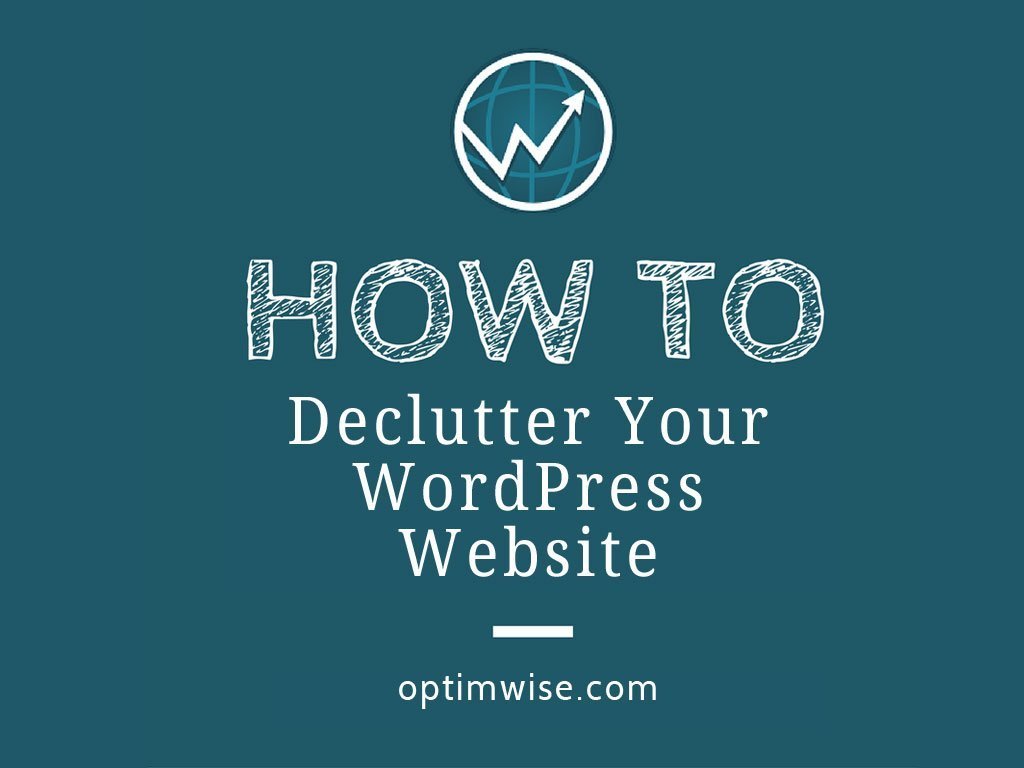
I love decluttering! I get a dopamine hit when I delete, clean, and remove anything unnecessary. I'm a big fan of decluttering WordPress websites, too.
Let's look at why and how to declutter various areas of WordPress.
Note: This page contains affiliate links. Please see Affiliate Disclosure.
Why bother decluttering your WordPress site?
Now, let's declutter our way through several areas of WordPress. But first, make a complete backup of your site (files and database)!
I created a video walking through how to declutter a WordPress site. Below the video are notes.
Go through the Posts area of your site, deleting anything you no longer need. But first, save the URL and create a redirect to redirect that URL to the best match (another post, a page, a category archive, etc.).
Same as Posts (above). Go through the Pages area of your site, deleting anything you no longer need. But first, save the URL and create a redirect to redirect that URL to the best match (another post, a page, a category archive, etc.).
Go through the Media area of your site, deleting any files you no longer need. Cleaning this area is more difficult than cleaning others, because you don't want to delete any images, PDFs, or other files that are in use. Unfortunately, it's not very easy to figure that out.
You could try a plugin that finds duplicate media, such as Media Cleaner. Other options with lower ratings are Media Deduper, Image Cleanup, and DNUI (Delete Not Used Image) (the last 2 haven't been updated in years).
If you don't want to risk a plugin, or they don't do the job, you can try the (painful) manual method:
Switch your Media Library to List View (icon at top left of page) and look at the Uploaded To column. That tells which page/post the file was uploaded to. This doesn't mean that the file is still used on that page/post, or that it's not used in other places (pages, posts, widgets, theme, etc.).
When you click Edit for an item in the Media Library, you'll see a File URL field that contains the full URL. Then, edit a page/post, switch the editor to Text (tab at top right of editor), and look at the file URL. If that URL matches the File URL in the Media Library, it's the same file.
Go through the Comments area of your site, deleting anything you no longer need.
Go through the Appearance > Themes area of your site, deleting anything you no longer need. Be careful about parent themes! If you're using a child theme, it needs its parent theme (such as Genesis). If you click your active theme, a box will pop up and say something like "This is a child theme of [X]," and you'll know then that you need to keep X (such as Genesis).
Go through the Plugins area of your site, deactivating and then deleting anything you no longer need. For more detailed instructions, see How to Audit and Clean Up WordPress Plugins.
Go through the Users area of your site, deleting anything you no longer need.
In addition to the areas built into WordPress, which we went through above, you may see other items in your Admin Menu (along the left side of your WordPress admin area). You may have Custom Post Types such as Testimonials, Portfolio, Sliders, and more. Use the same method as above: go through those areas of your site, deleting anything you no longer need.
Now that you've removed the junk from your WordPress site, you have a clean workspace for creating more content that will attract traffic, generate leads, and bring you sales! If you'd like help decluttering your site, or improving it in some other way, please contact us!
Its a fantastic way to declutter WordPress website. Thanks
You're welcome, NKM. I'm glad you found it helpful!